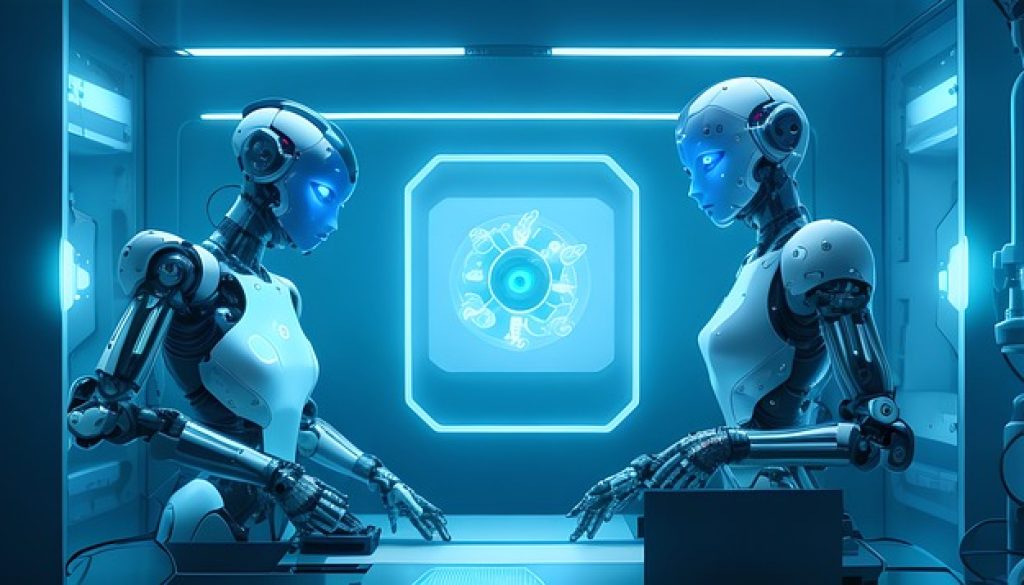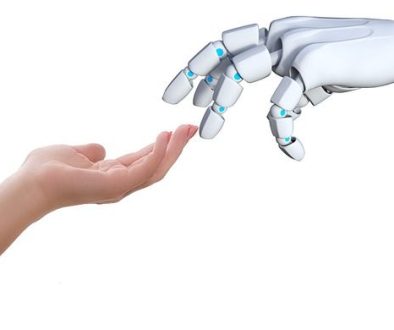Through most of our history, the totality of human technology was comprised of our brains, fire, and sharp sticks. As time progressed, fire and sharp sticks evolved into power plants and nuclear weapons, but the most significant advancement occurred within our brains.

Evolution of Human Technology
Starting from the 1960s, the capabilities of our brain-powered machines have been growing exponentially, enabling computers to simultaneously shrink in size and increase in power. However, this trajectory is approaching its physical limitations. Computer components are now approaching the scale of an atom. To comprehend the challenges posed by this situation, we need to clarify some fundamental principles.
The Structure of Computers
A computer is an assemblage of exceedingly basic components, each performing straightforward functions—representing data, processing data, and implementing control mechanisms. At the core are computer chips containing modules, which in turn comprise logic gates housing transistors. Transistors, the most elementary data processors in computers, function essentially as switches, capable of either blocking or allowing the passage of information. Bits, constituting the information, can be set to either 0 or 1. Combining multiple bits allows representation of more intricate information. These transistors combine to create logic gates, each performing a relatively simple function. For instance, an AND Gate outputs 1 only if all its inputs are 1, and outputs 0 otherwise. Various logic gates amalgamate to form meaningful modules, such as those used for addition.
With the ability to perform basic operations like addition and multiplication, computers become versatile in their capabilities. However, as components continue to shrink, quantum physics starts to complicate matters. At its essence, a transistor operates as an electric switch, controlling the movement of electrons. Electricity involves the movement of electrons from one point to another, and a switch acts as a barrier, determining the direction of this movement. Presently, the scale of transistors stands at about 14 nanometers, which is approximately 8 times smaller than the HIV virus’ diameter and 500 times smaller than a red blood cell. As transistors approach the size of only a few atoms, quantum tunneling becomes a possibility, electrons might traverse to the other side of a blocked passage through this quantum phenomenon. In the realm of quantum physics, the predictable principles that govern traditional computers cease to hold true, presenting a tangible barrier to our technological progress.
To surmount this challenge, scientists are harnessing these unusual quantum properties by endeavoring to build quantum computers. In conventional computers, bits are the fundamental units of information. Quantum computers on the other hand, employ qubits, which can also hold one of two values—0 or 1,. A qubit can be realized using a two-level quantum system, such as a spin and a magnetic field or a single photon. Unlike classical bits, which can only be in one state at a time, qubits can exist in a superposition of both states simultaneously. This property, known as superposition, allows for exponentially greater computational capacity as qubits increase. Another intriguing feature of qubits is entanglement, wherein entangled qubits exhibit instantaneous reactions to changes in each other’s states, regardless of the distance separating them. Quantum gates manipulate these superpositions and probabilities, producing yet another superposition as output. Quantum computers set up qubits, apply quantum gates to entangle and manipulate probabilities, and measure the outcome, collapsing superpositions to a sequence of 0s and 1s. This approach allows for a multitude of calculations to be executed simultaneously, exponentially enhancing efficiency compared to traditional computers.

While quantum computers may not completely replace our home computers, they offer significant advantages in certain domains. Database searching, for instance, benefits immensely from the computational efficiency of quantum algorithms, making it significantly faster compared to traditionalmethods. Quantum computers also pose a potential threat to IT security, particularly in the domain of encryption systems, due to their exponential speed-up in certain calculations.
Moreover, quantum simulations hold promise for revolutionizing fields like medicine by providing accurate insights into complex structures such as proteins.
In the end, the true extent of quantum computer’s impact remains uncertain whether they will be specialized tools or a revolutionary force reshaping humanity’s technological landscape. The boundaries of technology remain undefined, and the only path to clarity is through exploration and experimentation.
I hope this article has been informative for you. Thank you for viewing.



